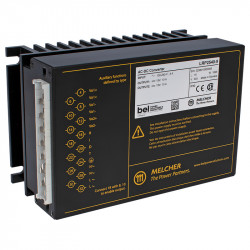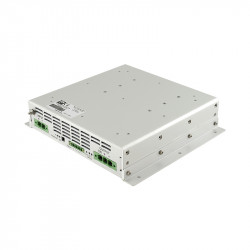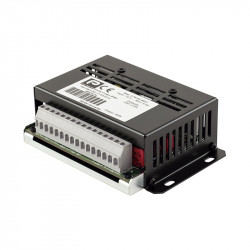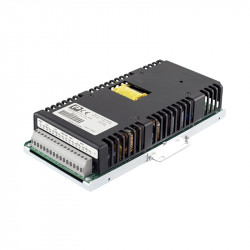Musíte být přihlášen
-
moreX
-
Komponenty
-
-
Category
-
Polovodiče
- LED diody
- Tyristory
- Elektroizolační moduly
- Přemosťovací usměrňovače
-
Tranzistory
- Tranzistory | GeneSiC
- SiC MOSFET moduly | Mitsubishi
- SiC MOSFET moduly | STARPOWER
- Moduly ABB SiC MOSFET
- Moduly IGBT | MITSUBISHI
- Tranzistorové moduly | MITSUBISHI
- Moduly MOSFET | MITSUBISHI
- Tranzistorové moduly | ABB
- Moduly IGBT | POWEREX
- Moduly IGBT | INFINEON (EUPEC)
- Polovodičové prvky z karbidu křemíku (SiC)
- Go to the subcategory
- Ovladače brány
- Bloky napájení
- Go to the subcategory
- Měniče proudu a napětí LEM
-
Pasivní součásti (kondenzátory, rezistory, pojistky, filtry)
- Rezistory
-
Pojistky
- Miniaturní pojistky pro elektronické obvody řady ABC a AGC
- Trubkové rychle působící pojistky
- Pojistkové vložky s časovým zpožděním s charakteristikami GL / GG a AM
- Ultrarychlé pojistkové články
- Rychle působící pojistky (britský a americký standard)
- Rychle působící pojistky (evropský standard)
- Pojistky pojezdu
- Pojistkové vložky vysokého napětí
- Go to the subcategory
-
Kondenzátory
- Motorové kondenzátory
- Elektrolytické kondenzátory
- Filmové kondenzátory
- Výkonové kondenzátory
- Kondenzátory pro stejnosměrné obvody
- Kondenzátory korekce účiníku
- Vysokonapěťové kondenzátory
- Indukční topné kondenzátory
- Kondenzátory pulsu a energie
- DC LINK kondenzátory
- Kondenzátory pro AC / DC obvody
- Go to the subcategory
- EMI filtry
- Superkondenzátory
- Přepěťová ochrana
- Go to the subcategory
-
Relé a stykače
- Teorie relé a stykačů
- 3fázová střídavá polovodičová relé
- 3fázová střídavá polovodičová relé
- Regulátory, ovládací prvky a příslušenství
- Měkké spouštění a reverzační stykače
- Elektromechanická relé
- Stykače
- Otočné spínače
-
Jednofázová střídavá polovodičová relé
- Jednofázová střídavá polovodičová relé, 1 řada | D2425 | D2450
- Jednofázová střídavá polovodičová relé řady CWA a CWD
- Jednofázová střídavá polovodičová relé řady CMRA a CMRD
- Jednofázová střídavá polovodičová relé řady PS
- Dvojitá a čtyřnásobná střídavá polovodičová relé řady D24 D, TD24 Q, H12D48 D.
- Jednofázová polovodičová relé řady GN
- Jednofázová střídavá polovodičová relé řady CKR
- Jednofázová AC relé na lištu DIN řady ERDA A ERAA
- Jednofázová AC relé pro proud 150 A.
- Dvojitá polovodičová relé integrovaná s chladičem pro lištu DIN
- Go to the subcategory
- Jednofázová AC polovodičová relé pro PCB
- Relé rozhraní
- Go to the subcategory
- Jádra a další indukční součásti
- Radiátory, varistory, tepelné ochrany
- Fanoušci
- Klimatizace, příslušenství pro elektrické skříně, chladiče
-
Baterie, nabíječky, vyrovnávací zdroje a střídače
- Baterie, nabíječky - teoretický popis
- Lithium-iontové baterie. Vlastní baterie. Systém správy baterií (BMS)
- Baterie
- Nabíječky baterií a příslušenství
- Záložní zdroj UPS a vyrovnávací napájecí zdroje
- Převaděče a příslušenství pro fotovoltaiku
- Úschovna energie
- Palivové články
- Lithium-iontové baterie
- Go to the subcategory
-
Automatika
- Futaba Drone Parts
- Koncové spínače, mikrospínače
- Senzory, převodníky
- Pyrometrie
- Počítadla, časovače, panelové měřiče
- Průmyslová ochranná zařízení
- Světelná a zvuková signalizace
- Termovizní kamera
- LED displeje
- Tlačítka a spínače
-
Zapisovače
- Zapisovač AL3000
- Rekordér KR2000
- Rekordér KR5000
- Měřič HN-CH s funkcí registrace vlhkosti a teploty
- Spotřební materiál pro zapisovače
- Rekordér 71VR1
- Zapisovač KR 3000
- Počítačové rekordéry řady R1M
- Počítačové rekordéry řady R2M
- PC rekordér, 12 izolovaných vstupů - RZMS-U9
- PC rekordér, USB, 12 izolovaných vstupů - RZUS
- Go to the subcategory
- Go to the subcategory
-
Kabely, dráty, vodiče, flexibilní připojení
- dráty
- lanka
- Kabely pro speciální aplikace
- košile
-
prýmky
- prýmky byt
- prýmky kolo
- Velmi flexibilní opletení - plochý
- Velmi flexibilní opletení - Round
- Měď opletené válcové
- Mědí štít a válcové
- Flexibilní zemnící pásky
- Opletení válcovité pozinkované a nerezové oceli
- PVC izolované měděné pletivo - teplota 85 ° C
- Ploché pletené hliníkové
- Connection Kit - prýmky a trubky
- Go to the subcategory
- Příslušenství pro trakční
- kabelové botky
- Ohebné izolované přípojnice
- Vícevrstvá ohebná lišta
- Systémy vedení kabelů
- Potrubí, trubky
- Go to the subcategory
- View all categories
-
Polovodiče
-
-
- Suppliers
-
Applications
- AC a DC pohony (střídače)
- Automatizace HVAC
- CNC obráběcí stroje
- Energy bank
- Indukční ohřev
- Komponenty pro prostředí s nebezpečím výbuchu (EX)
- Měření a regulace teploty
- Měření a regulace teploty
- Motory a transformátory
- Napájecí zdroje (UPS) a usměrňovací systémy
- Průmyslová automatizace
- Průmyslová automatizace
- Průmyslová ochranná zařízení
- Stroje na sušení a zpracování dřeva
- Stroje na tvarování plastů za tepla
- Svařovací stroje a svářecí stroje
- Těžba, hutnictví a slévárenství
- Tisk
- Tramvajová a železniční trakce
- Zařízení pro distribuční, řídicí a telekomunikační skříně
-
Instalace
-
-
Induktory
-
-
Indukční zařízení
-
-
https://www.dacpol.eu/pl/naprawy-i-modernizacje
-
-
Servis
-
- Kontakt
- Zobacz wszystkie kategorie
DC-DC converters in railroad applications

Electronic systems are an important aspect of railroad rolling stock, affecting the comfort and safety of passengers, while at the same time providing the operator with full control over electronic components and equipment on board the rail vehicle.
The emphasis on automation and high performance of such systems is a result of rapidly developing technologies and the requirements of passengers themselves. Among the railroad systems we can distinguish, for example:
- Train Control and Management System – TCMS;
- Passenger Information System – PIS;
- Automatic Train Control system – ATC;
- Radio communication system;
- Lighting system;
- AC and heating system;
- Braking system.
Suitably matched current directly from the overhead line, redundant low voltage power supply or battery power are mostly used to power the auxiliary systems of rail vehicles.
How to match the current to the electronic systems of railroad vehicles?
DC-DC converters come to our air. These are electrical or electromechanical devices that convert direct current of specific parameters into direct current of other parameters. Converters are mostly used in power systems that cannot be fed directly to the receiver. The current passed through such a converter is appropriately increased or decreased.
We distinguish between the following DC-DC converters:
- Voltage polarity inverting converters;
- Step-up converters;
- Step-down converters;
- Buck-boost converters.
The latest solutions are using advanced DC-DC converters, whose operation can be continuously adapted to current needs.
What requirements must inverters for the railroad industry meet?
All electrical and electronic equipment must comply with certain standards in order to operate in railroad rolling stock. EN 50155 is a standard that specifies requirements for electronic equipment used in the railroad industry, including:
- Electrical requirements - voltage range, insulation strength, resistance to surges, overloads, electrostatic discharges and blackouts;
- EMC requirements - protection against electromagnetic interference;
- Environmental requirements - operating temperature, humidity level, IP and IK protection, shock and vibration resistance;
- Requirements defining the life cycle of the device and the way it should be used.
EN 50155 compliant inverters are used in:
- In traction systems;
- In vehicle power and communication systems;
- Military and telecommunications applications;
- In equipment with difficult operating conditions.
Související produkty
Související příspěvky
 Now available – DC/DC converters from PREMIUM
Now available – DC/DC converters from PREMIUM
 New release in DACPOL lighting for lathes – Kira covers
New release in DACPOL lighting for lathes – Kira covers








Zanechat komentář